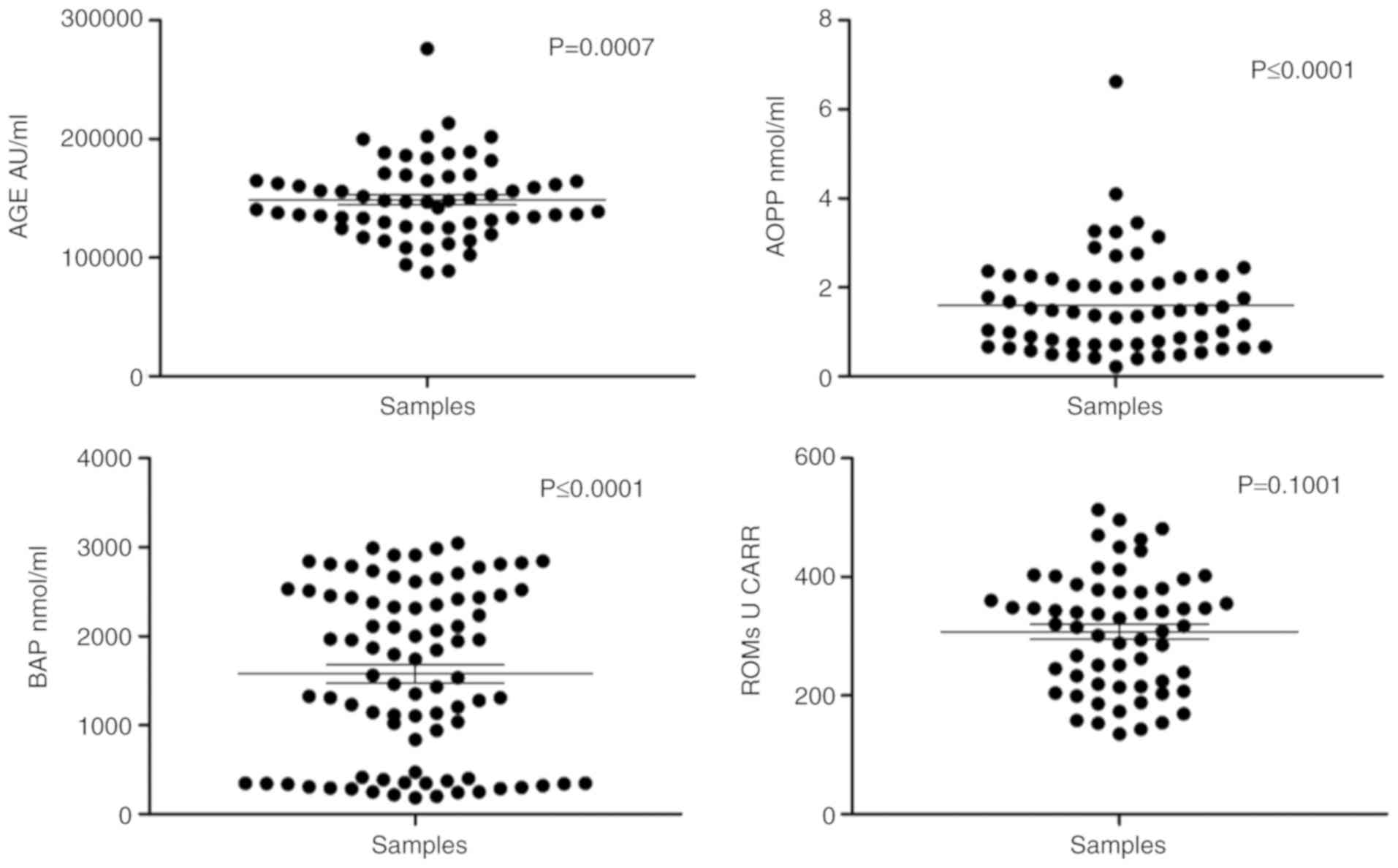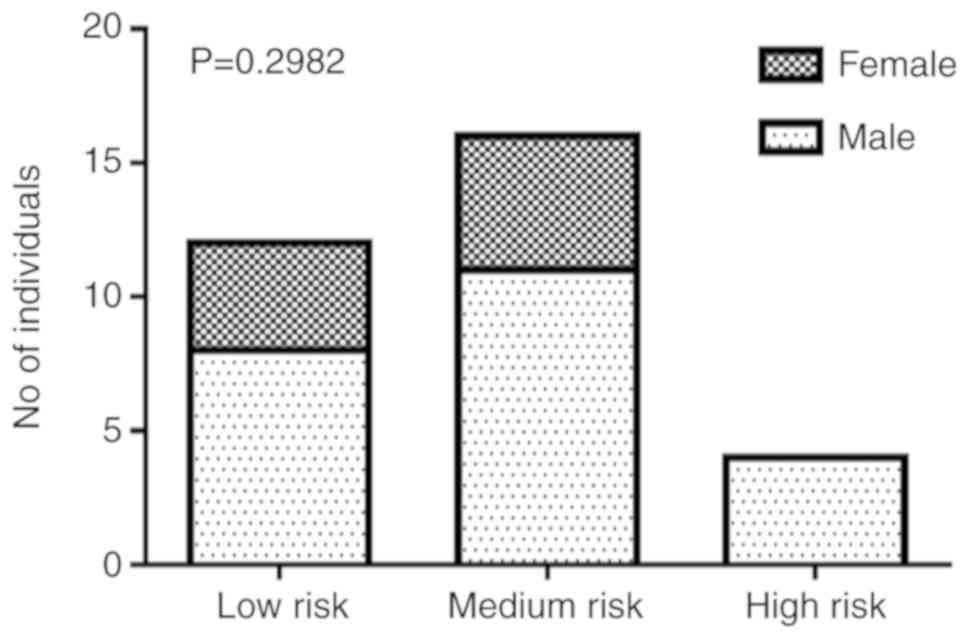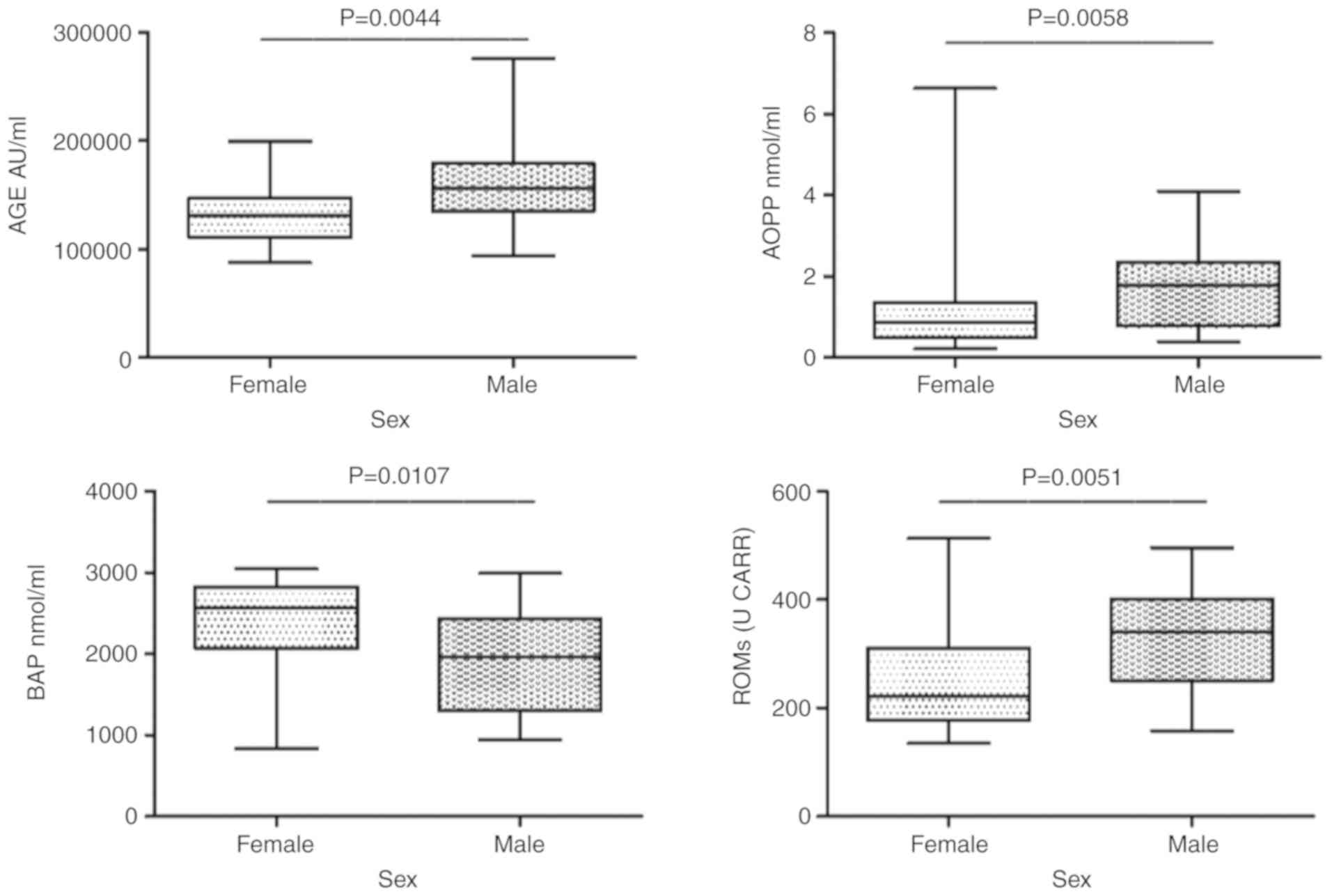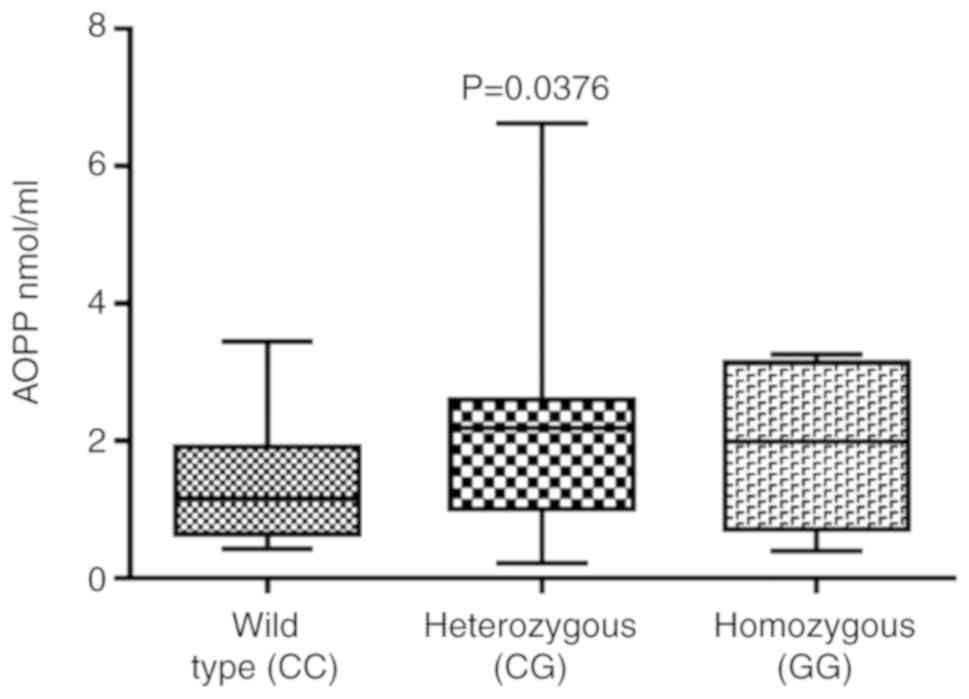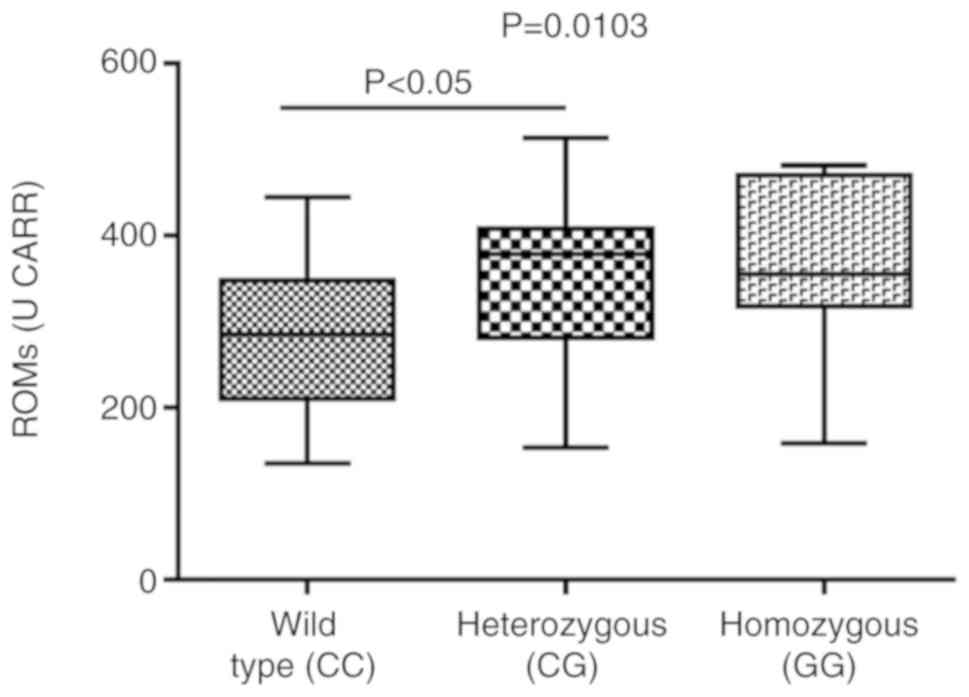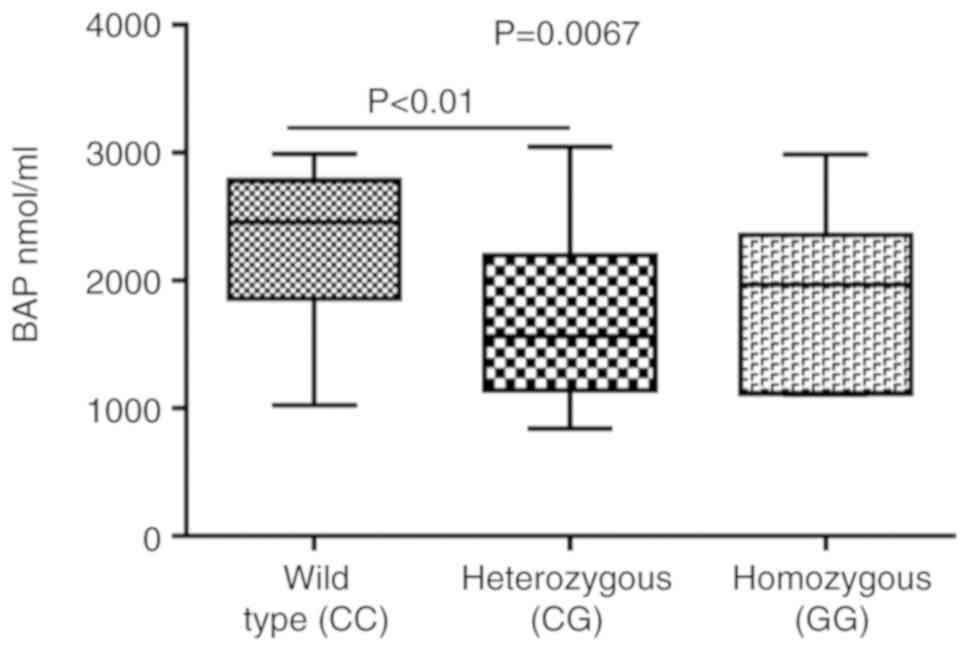|
1
|
Martenies SE and Perry MJ: Environmental
and occupational pesticide exposure and human sperm parameters: A
systematic review. Toxicology. 307:66–73. 2013. View Article : Google Scholar : PubMed/NCBI
|
|
2
|
Sultana Shaik A, Shaik AP, Jamil K and
Alsaeed AH: Evaluation of cytotoxicity and genotoxicity of
pesticide mixtures on lymphocytes. Toxicol Mech Methods.
26:588–594. 2016. View Article : Google Scholar : PubMed/NCBI
|
|
3
|
Gangemi S, Gofita E, Costa C, Teodoro M,
Briguglio G, Nikitovic D, Tzanakakis G, Tsatsakis AM, Wilks MF,
Spandidos DA and Fenga C: Occupational and environmental exposure
to pesticides and cytokine pathways in chronic diseases (Review).
Int J Mol Med. 38:1012–1020. 2016. View Article : Google Scholar : PubMed/NCBI
|
|
4
|
Mamane A, Baldi I, Tessier JF, Raherison C
and Bouvier G: Occupational exposure to pesticides and respiratory
health. Eur Respir Rev. 24:306–319. 2015. View Article : Google Scholar : PubMed/NCBI
|
|
5
|
Parrón T, Requena M, Hernández AF and
Alarcón R: Environmental exposure to pesticides and cancer risk in
multiple human organ systems. Toxicol Lett. 230:157–165. 2014.
View Article : Google Scholar
|
|
6
|
Yu Y, Yang A, Zhang J and Hu S: Maternal
exposure to the mixture of organophosphorus pesticides induces
reproductive dysfunction in the offspring. Environ Toxicol.
28:507–515. 2013. View Article : Google Scholar
|
|
7
|
Fenga C, Gangemi S, Teodoro M, Rapisarda
V, Golokhvast K, Docea AO, Tsatsakis AM and Costa C:
8-Hydroxydeoxyguanosine as a biomarker of oxidative DNA damage in
workers exposed to low-dose benzene. Toxicol Rep. 4:291–295. 2017.
View Article : Google Scholar : PubMed/NCBI
|
|
8
|
Costa C, Miozzi E, Teodoro M, Briguglio G,
Rapisarda V and Fenga C: New insights on ‘old’ toxicants in
occupational toxicology (Review). Mol Med Rep. 15:3317–3322. 2017.
View Article : Google Scholar : PubMed/NCBI
|
|
9
|
Gangemi S, Miozzi E, Teodoro M, Briguglio
G, De Luca A, Alibrando C, Polito I and Libra M: Occupational
exposure to pesticides as a possible risk factor for the
development of chronic diseases in humans (Review). Mol Med Rep.
14:4475–4488. 2016. View Article : Google Scholar : PubMed/NCBI
|
|
10
|
Suratman S, Edwards JW and Babina K:
Organophosphate pesticides exposure among farmworkers: Pathways and
risk of adverse health effects. Rev Environ Health. 30:65–79.
2015.PubMed/NCBI
|
|
11
|
Falzone L, Marconi A, Loreto C, Franco S,
Spandidos DA and Libra M: Occupational exposure to carcinogens:
Benzene, pesticides and fibers (Review). Mol Med Rep. 14:pp.
4467–4474. 2016, View Article : Google Scholar : PubMed/NCBI
|
|
12
|
Polo A, Crispo A, Cerino P, Falzone L,
Candido S, Giudice A, De Petro G, Ciliberto G, Montella M, Budillon
A and Costantini S: Environment and bladder cancer: Molecular
analysis by interaction networks. Oncotarget. 8:65240–65252. 2017.
View Article : Google Scholar : PubMed/NCBI
|
|
13
|
Collotta M, Bertazzi PA and Bollati V:
Epigenetics and pesticides. Toxicology. 307:35–41. 2013. View Article : Google Scholar : PubMed/NCBI
|
|
14
|
Koutros S, Andreotti G, Berndt SI, Hughes
Barry K, Lubin JH, Hoppin JA, Kamel F, Sandler DP, Burdette LA,
Yuenger J, et al: Xenobiotic-metabolizing gene variants, pesticide
use, and the risk of prostate cancer. Pharmacogenet Genomics.
21:615–623. 2011. View Article : Google Scholar : PubMed/NCBI
|
|
15
|
Weldon BA, Shubin SP, Smith MN, Workman T,
Artemenko A, Griffith WC, Thompson B and Faustman EM: Urinary
microRNAs as potential biomarkers of pesticide exposure. Toxicol
Appl Pharmacol. 312:19–25. 2016. View Article : Google Scholar : PubMed/NCBI
|
|
16
|
Yuan H, Yuan M, Tang Y, Wang B and Zhan X:
MicroRNA expression profiling in human acute organophosphorus
poisoning and functional analysis of dysregulated miRNAs. Afr
Health Sci. 18:333–342. 2018. View Article : Google Scholar
|
|
17
|
Falzone L, Romano GL, Salemi R, Bucolo C,
Tomasello B, Lupo G, Anfuso CD, Spandidos DA, Libra M and Candido
S: Prognostic significance of deregulated microRNAs in uveal
melanomas. Mol Med Rep. 19:2599–2610. 2019.PubMed/NCBI
|
|
18
|
Falzone L, Lupo G, La Rosa GRM, Crimi S,
Anfuso CD, Salemi R, Rapisarda E, Libra M and Candido S:
Identification of novel MicroRNAs and their diagnostic and
prognostic significance in oral cancer. Cancers (Basel). 11:2019.
View Article : Google Scholar
|
|
19
|
Candido S, Lupo G, Pennisi M, Basile MS,
Anfuso CD, Petralia MC, Gattuso G, Vivarelli S, Spandidos DA, Libra
M and Falzone L: The analysis of miRNA expression profiling
datasets reveals inverse microRNA patterns in glioblastoma and
Alzheimer’s disease. Oncol Rep. 42:911–922. 2019.PubMed/NCBI
|
|
20
|
Petrakis D, Vassilopoulou L, Mamoulakis C,
Psycharakis C, Anifantaki A, Sifakis S, Docea AO, Tsiaoussis J,
Makrigiannakis A and Tsatsakis AM: Endocrine disruptors leading to
obesity and related diseases. Int J Environ Res Public Health.
14:2017. View Article : Google Scholar : PubMed/NCBI
|
|
21
|
Surajudeen YA, Sheu RK, Ayokulehin KM and
Olatunbosun AG: Oxidative stress indices in Nigerian pesticide
applicators and farmers occupationally exposed to organophosphate
pesticides. Int J Appl basic Med Res. 4:S37–S40. 2014. View Article : Google Scholar : PubMed/NCBI
|
|
22
|
Wafa T, Nadia K, Amel N, Ikbal C, Insaf T,
Asma K, Hedi MA and Mohamed H: Oxidative stress, hematological and
biochemical alterations in farmers exposed to pesticides. J Environ
Sci Health B. 48:1058–1069. 2013. View Article : Google Scholar : PubMed/NCBI
|
|
23
|
Aouey B, Derbali M, Chtourou Y, Bouchard
M, Khabir A and Fetoui H: Pyrethroid insecticide lambda-cyhalothrin
and its metabolites induce liver injury through the activation of
oxidative stress and proinflammatory gene expression in rats
following acute and subchronic exposure. Environ Sci Pollut Res
Int. 24:5841–5856. 2017. View Article : Google Scholar : PubMed/NCBI
|
|
24
|
Fenga C, Gangemi S, Di Salvatore V,
Falzone L and Libra M: Immunological effects of occupational
exposure to lead (Review). Mol Med Rep. 15:3355–3360. 2017.
View Article : Google Scholar : PubMed/NCBI
|
|
25
|
Costa C, Tsatsakis A, Mamoulakis C,
Teodoro M, Briguglio G, Caruso E, Tsoukalas D, Margina D, Dardiotis
E, Kouretas D and Fenga C: Current evidence on the effect of
dietary polyphenols intake on chronic diseases. Food Chem Toxicol.
110:286–299. 2017. View Article : Google Scholar : PubMed/NCBI
|
|
26
|
Costa C, Ozcagli E, Gangemi S, Schembri F,
Giambò F, Androutsopoulos V, Tsatsakis A and Fenga C: Molecular
biomarkers of oxidative stress and role of dietary factors in
gasoline station attendants. Food Chem Toxicol. 90:30–35. 2016.
View Article : Google Scholar : PubMed/NCBI
|
|
27
|
Costa C, Gangemi S, Giambò F, Rapisarda V,
Caccamo D and Fenga C: Oxidative stress biomarkers and paraoxonase
1 polymorphism frequency in farmers occupationally exposed to
pesticides. Mol Med Rep. 12:6353–6357. 2015. View Article : Google Scholar : PubMed/NCBI
|
|
28
|
Teodoro M, Briguglio G, Fenga C and Costa
C: Genetic polymorphisms as determinants of pesticide toxicity:
Recent advances. Toxicol Rep. 6:564–570. 2019. View Article : Google Scholar : PubMed/NCBI
|
|
29
|
Costa C, Miozzi E, Teodoro M and Fenga C:
Influence of genetic polymorphism on pesticide-induced oxidative
stress. Curr Opin Toxicol. 13:1–7. 2019. View Article : Google Scholar
|
|
30
|
Ginsberg G, Smolenski S, Hattis D, Guyton
KZ, Johns DO and Sonawane B: Genetic polymorphism in glutathione
transferases (GST): Population distribution of GSTM1, T1, and P1
conjugating activity. J Toxicol Environ Health B. 12:389–439. 2009.
View Article : Google Scholar
|
|
31
|
Ginsberg G, Neafsey PJ, Hattis D, Guyton
KZ, Johns DO and Sonawane B: Genetic polymorphism in paraoxonase 1
(PON1): Population distribution of PON1 activity. J Toxicol Environ
Health B. 12:473–507. 2009. View Article : Google Scholar
|
|
32
|
Hirose H, Kawabe H, Komiya N and Saito I:
Relations between serum reactive oxygen metabolites (ROMs) and
various inflammatory and metabolic parameters in a Japanese
population. J Atheroscler Thromb. 16:77–82. 2009. View Article : Google Scholar : PubMed/NCBI
|
|
33
|
Kakita H, Hussein MH, Daoud GA, Kato T,
Murai H, Sugiura T, Mizuno K, Yamada Y, Ito T, Fukuda S, et al:
Total hydroperoxide and biological antioxidant potentials in a
neonatal sepsis model. Pediatr Res. 60:675–679. 2006. View Article : Google Scholar : PubMed/NCBI
|
|
34
|
Hernández AF, Lacasaña M, Gil F,
Rodríguez-Barranco M, Pla A and López-Guarnido O: Evaluation of
pesticide-induced oxidative stress from a gene-environment
interaction perspective. Toxicology. 307:95–102. 2013. View Article : Google Scholar
|
|
35
|
Shin BS: Paraoxonase gene polymorphism in
south-western Korean population. J Korean Med Sci. 24:561–566.
2009. View Article : Google Scholar : PubMed/NCBI
|
|
36
|
Bordoni L, Nasuti C, Fedeli D, Galeazzi R,
Laudadio E, Massaccesi L, López-Rodas G and Gabbianelli R: Early
impairment of epigenetic pattern in neurodegeneration: Additional
mechanisms behind pyrethroid toxicity. Exp Gerontol.
124:1106292019. View Article : Google Scholar : PubMed/NCBI
|
|
37
|
Volk M, Jaklič H, Zorn B and Peterlin B:
Association between male infertility and genetic variability at the
PON1/2 and GSTM1/T1 gene loci. Reprod Biomed Online. 23:105–110.
2011. View Article : Google Scholar : PubMed/NCBI
|
|
38
|
Aguirre-Vidal Y, Monroy-Noyola A,
Anaya-Ramos L, Arteaga-Silva M, Mendez-Armenta M, Ostoa-Saloma P,
Díaz-Zaragoza M, Morales-Montor J, Ríos C and Montes S:
β-estradiol-3-benzoate confers neuroprotection in Parkinson
MPP+ rat model through inhibition of lipid peroxidation.
Steroids. 126:7–14. 2017. View Article : Google Scholar : PubMed/NCBI
|
|
39
|
Li X, Cao J, Wang J, Song H, Ji G, Dong Q,
Wei C, Cao Y, Wang B, Zhu B and Xiao H: PON2 and ATP2B2 gene
polymorphisms with noise-induced hearing loss. J Thorac Dis.
8:430–438. 2016. View Article : Google Scholar : PubMed/NCBI
|
|
40
|
Li YR, Zhu H, Kauffman M, Danelisen I,
Misra HP, Ke Y and Jia Z: Paraoxonases function as unique
protectors against cardiovascular diseases and diabetes: Updated
experimental and clinical data. Exp Biol Med (Maywood).
239:899–906. 2014. View Article : Google Scholar
|
|
41
|
Liu YJ, Huang PL, Chang YF, Chen YH, Chiou
YH, Xu ZL and Wong RH: GSTP1 genetic polymorphism is associated
with a higher risk of DNA damage in pesticide-exposed fruit
growers. Cancer Epidemiol Biomarkers Prev. 15:659–666. 2006.
View Article : Google Scholar : PubMed/NCBI
|
|
42
|
Shi J, Zhang S, Tang M, Liu X, Li T, Han
H, Wang Y, Guo Y, Zhao J, Li H and Ma C: Possible association
between Cys311Ser polymorphism of paraoxonase 2 gene and late-onset
Alzheimer’s disease in Chinese. Brain Res Mol Brain Res.
120:201–204. 2004. View Article : Google Scholar : PubMed/NCBI
|
|
43
|
Ren H, Tan SL, Liu MZ, Banh HL and Luo JQ:
Association of PON2 gene polymorphisms (Ser311Cys and Ala148Gly)
with the risk of developing type 2 diabetes mellitus in the Chinese
population. Front Endocrinol (Lausanne). 9:4952018. View Article : Google Scholar
|
|
44
|
González-Castro TB, Tovilla-Zárate CA,
Juárez-Rojop IE, Hernández-Díaz Y, López-Narváez ML,
Rodríguez-Pérez C, González-Hernández YK and Ramos-Méndez MÁ: PON2
and PPARG polymorphisms as biomarkers of risk for coronary heart
disease. Biomark Med. 12:287–297. 2018. View Article : Google Scholar : PubMed/NCBI
|
|
45
|
Chen ML, Zhao H, Liao N and Xie ZF:
Association between paraoxonase 2 Ser311Cys polymorphism and
coronary heart disease risk: A meta-analysis. Med Sci Monit.
22:3196–3201. 2016. View Article : Google Scholar : PubMed/NCBI
|
|
46
|
Andalib S, Vaseghi G, Motavallian A,
Sadeghi HM, Eshraghi A, Amini M and Majlesi AR: Association of
polymorphism of ser311cys paraoxonase-2 gene with type 2 diabetes
mellitus in Iran. Int J Prev Med. 4:517–522. 2013.PubMed/NCBI
|
|
47
|
Teranishi M, Uchida Y, Nishio N, Kato K,
Otake H, Yoshida T, Suzuki H, Sone M, Sugiura S, Ando F, et al:
Polymorphisms in genes involved in oxidative stress response in
patients with sudden sensorineural hearing loss and Ménière’s
disease in a Japanese population. DNA Cell Biol. 31:1555–1562.
2012. View Article : Google Scholar : PubMed/NCBI
|
|
48
|
Li BH, Zhang LL, Yin YW, Pi Y, Yang QW,
Gao CY, Fang CQ, Wang JZ and Li JC: Association between paraoxonase
2 Ser311Cys polymorphism and ischemic stroke risk: A meta-analysis
involving 5,008 subjects. Mol Biol Rep. 39:5623–5630. 2012.
View Article : Google Scholar
|
|
49
|
Tsatsakis A, Kouretas D, Tzatzarakis M,
Stivaktakis P, Tsarouhas K, Golokhvast KS, Rakitskii VN, Tutelyan
VA, Hernandez AF, Rezaee R, et al: Simulating real-life exposures
to uncover possible risks to human health: A proposed consensus for
a novel methodological approach. Hum Exp Toxicol. 36:554–564. 2017.
View Article : Google Scholar : PubMed/NCBI
|
|
50
|
Docea AO, Calina D, Goumenou M, Neagu M,
Gofita E and Tsatsakis AM: Study design for the determination of
toxicity from long-term-low-dose exposure to complex mixtures of
pesticides, food additives and lifestyle products. Toxicol Lett.
258:S1792016. View Article : Google Scholar
|
|
51
|
Tsatsakis AM, Docea AO and Tsitsimpikou C:
New challenges in risk assessment of chemicals when simulating real
exposure scenarios; simultaneous multi-chemicals’ low dose
exposure. Food Chem Toxicol. 96:174–176. 2016. View Article : Google Scholar : PubMed/NCBI
|
|
52
|
Docea AO, Gofita E, Goumenou M, Calina D,
Rogoveanu O, Varut M, Olaru C, Kerasioti E, Fountoucidou P,
Taitzoglou I, et al: Six months exposure to a real life mixture of
13 chemicals’ below individual NOAELs induced non monotonic
sex-dependent biochemical and redox status changes in rats. Food
Chem Toxicol. 115:470–481. 2018. View Article : Google Scholar : PubMed/NCBI
|















